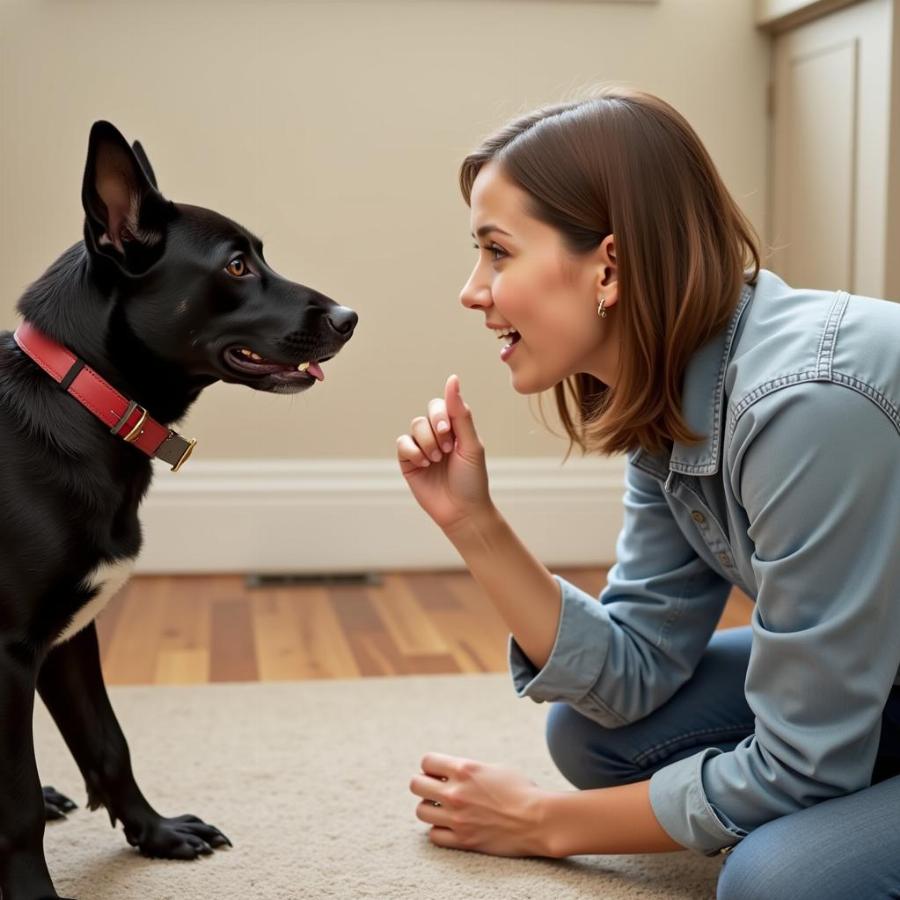Understanding a dog’s hearing abilities is crucial for effective communication and training. A dog hearing test can help determine if your furry friend is experiencing any hearing difficulties, allowing you to adapt your approach and provide the best possible care. This article explores the importance of dog hearing tests, different testing methods, and how to interpret the results.
Why is a Dog Hearing Test Important?
Hearing plays a vital role in a dog’s life, impacting their ability to interact with their environment, respond to commands, and build strong bonds with their owners. Early detection of hearing loss can significantly improve a dog’s quality of life and allow for timely interventions.  Home Dog Hearing Test
Home Dog Hearing Test
Identifying Potential Hearing Problems
Several factors can contribute to hearing loss in dogs, including age, breed predisposition, infections, injuries, and exposure to loud noises. Regular dog hearing tests can help identify potential problems early on, preventing them from escalating into more serious issues. For example, some breeds like Dalmatians are prone to congenital deafness. If you have a Dalmatian, knowing about their breed-specific health problems could be helpful, more information can be found in our article on dalmatian dogs health problems.
Different Types of Dog Hearing Tests
Several methods are available for testing a dog’s hearing, each with its own advantages and limitations. These include:
- Behavioral Observation: This involves observing the dog’s response to various sounds. While simple, it can be subjective and less accurate.
- BAER Test (Brainstem Auditory Evoked Response): This is a more sophisticated test that measures the electrical activity in the brainstem in response to sound. It is considered the gold standard for diagnosing hearing loss in dogs.
- Preyer Reflex Test: This test observes the dog’s involuntary ear twitch in response to a sudden sound.
How to Interpret the Results of a Dog Hearing Test
A veterinarian will interpret the results of a dog hearing test and provide recommendations based on the findings. Understanding the severity of hearing loss will help determine the appropriate course of action, which may include hearing aids, sign language training, or environmental modifications.
Caring for a Dog with Hearing Loss
Caring for a dog with hearing loss requires patience, understanding, and adaptation. Using visual cues, hand signals, and vibrations can help communicate effectively with a hearing-impaired dog.
Tips for Training a Deaf Dog
Training a deaf dog can be challenging but rewarding. Positive reinforcement methods, consistency, and patience are key to success.
Living with a Deaf Dog: Making Life Easier
Creating a safe and comfortable environment for a deaf dog is essential. This may involve using visual cues like flashing lights instead of auditory signals, keeping the dog on a leash in unfamiliar environments, and making sure the dog has a safe space to retreat to when feeling overwhelmed. For example, during the 4th of July, consider keeping your dog indoors to minimize their exposure to loud noises. Consider a wireless fence if you have two dogs and want to keep them contained, find more on that here: wireless dog fence for two dogs.
Conclusion
Dog hearing tests play a crucial role in ensuring the well-being of our canine companions. Early detection and appropriate intervention can significantly improve their quality of life. By understanding the importance of dog hearing tests and the various methods available, we can provide our furry friends with the care and support they need to thrive.
FAQ
- How often should I have my dog’s hearing tested? It’s recommended to have a baseline hearing test done when your dog is a puppy and then regularly as they age, especially if they are predisposed to hearing loss.
- Can hearing loss be reversed in dogs? In some cases, hearing loss caused by infections can be treated. However, age-related hearing loss is typically irreversible.
- Are there hearing aids for dogs? Yes, there are hearing aids specifically designed for dogs.
- How can I tell if my dog is losing its hearing? Signs of hearing loss in dogs include unresponsiveness to commands, increased startle reflex, and changes in barking.
- Is a dog hearing test painful? Most dog hearing tests are non-invasive and painless.
- How much does a dog hearing test cost? The cost varies depending on the type of test and the location.
- Can I test my dog’s hearing at home? While you can observe your dog’s response to sounds at home, it’s important to consult a veterinarian for a professional diagnosis.
Related Articles
If you’re interested in learning more about canine health, you might also enjoy these articles: barking weiner dog, dog happy halloween, 4th of july hot dogs
Beaut Dogs: Your Trusted Source for Canine Information
Beaut Dogs is your one-stop shop for all things canine, offering expert advice on breeds, care, and training. From understanding your dog’s unique needs to providing the best possible care, Beaut Dogs is here to support you every step of the way. For any questions or concerns, please contact us via Email: [email protected] for detailed and accurate answers from our team at Beaut Dogs.